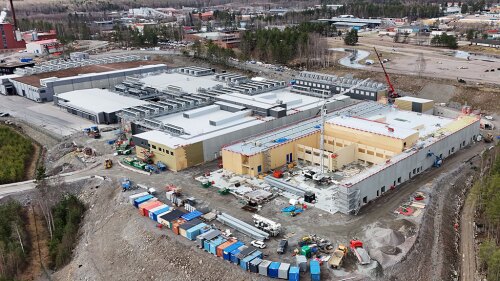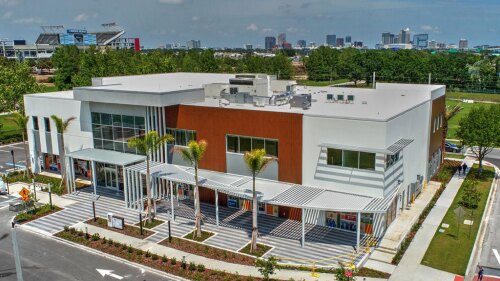Topics
Capital Markets and Finance
Making a significant move in the multifamily investment space, industry veteran Matt Ferrari officially launched PXV Multifamily, a private investment firm poised to acquire up to $2 billion in assets over the next 36 months. With a focus on both middle-market value-add properties and institutional-quality opportunities across the United States, PXV stands ready to capitalize on emerging market trends and challenges. Ferrari is an active member of the Urban Land Institute and the Multifamily Blue Flight Product Council.
Economists predict better liquidity and resilience ahead, but banks are likely to remain cautious about new loans.
MassHousing’s innovative new finance product invests public dollars into mixed-income housing
Design & Planning
Across the Brisbane River from Brisbane, Australia’s central business district, the 33-story Upper House residential tower stands out in the city’s skyline with its “dancing balconies” and curving timber ribbons inspired by the prominent roots of Queensland’s native Moreton Bay fig tree.
In cities large and small around the world—from Columbus, Ohio, to Valencia, Spain—a major focus of modern urban revitalization has been the addition of new sports arenas, purposely built in concert with supportive, mixed-use developments that can become self-sustaining neighborhoods.
In April 2025, ULI San Francisco announced a global call to “reimagine” San Francisco’s famed Market Street, soliciting ideas grounded in ecology, economy, and equality. The goal is to turn the often drab, blighted strip into a series of vibrant, interconnected communities.
Development and Construction
At the 2025 ULI Fall Meeting in San Francisco, leaders from across the development and construction industries discussed how they are adapting to a volatile yet stabilizing housing landscape in a session called “Report from the Field: Wrestling with the Cost of Housing Construction.” Despite headlines about tariffs, labor shortages, and inflation, the panelists agreed that the cost environment has settled into what one called a “new normal.”
The neighborhood will be home to more than 18,000 people, with a 21st-century focus on sustainability, innovation, and community
Each year, the ULI Young Leaders Exchange (YLX) selects a dynamic city as the backdrop for an immersive exploration of urban development. It brings together the most promising minds in real estate, planning, and design across the Americas—not simply to observe but also to engage, collaborate, and shape the industry’s future. To that end, in April, “YLX 2025 Orlando Unbound—The Space Between” welcomed 51 registered attendees representing 22 District Councils, including three returning participants from past exchanges.
Resilience and Sustainability
The ULI Randall Lewis Center for Sustainability in Real Estate—ULI’s flagship global center for decarbonization, resilience, and health—is pleased to announce its three newest board members: Jackie Knight, Julie Manning, and Anupam Yog.
Data centers have a reputation for high energy use. EcoDataCenter 1 in Falun, Sweden, offers an alternate model: its two data centers, DCA and DCB, derive all of their power from nearby renewable energy sources; 75 percent comes from hydropower and 25 percent from wind.
U.S. water and sewer rates have surged more than 50 percent in the last decade, with no signs of slowing. In many regions, water supply itself is constrained. Utilities are imposing restrictions, droughts are reshaping long-term availability, and developers are being told there simply isn’t enough water to serve new projects. And even when water is available, municipal wastewater systems often aren’t adequate to handle the extra load.
Issues and Trends
Concerns about deglobalization surge, AI revolutionizes real estate, and top European cities for investment identified as London, Madrid, Paris, Berlin, and Amsterdam
Most people walking Denver’s 16th Street today won’t stop to admire its drainage system or its suspended paving soil cells. They may not notice the careful choreography of trees, transit, and human movement as they stroll the pedestrian-oriented thoroughfare. What they will notice, ideally, is that something about the street just feels better. This kind of sublime shift reveals itself through human experience.
The evolution of community efforts to improve access to housing reveals that successful projects often hinge on fostering strong local partnerships that can provide essential supports and services.















